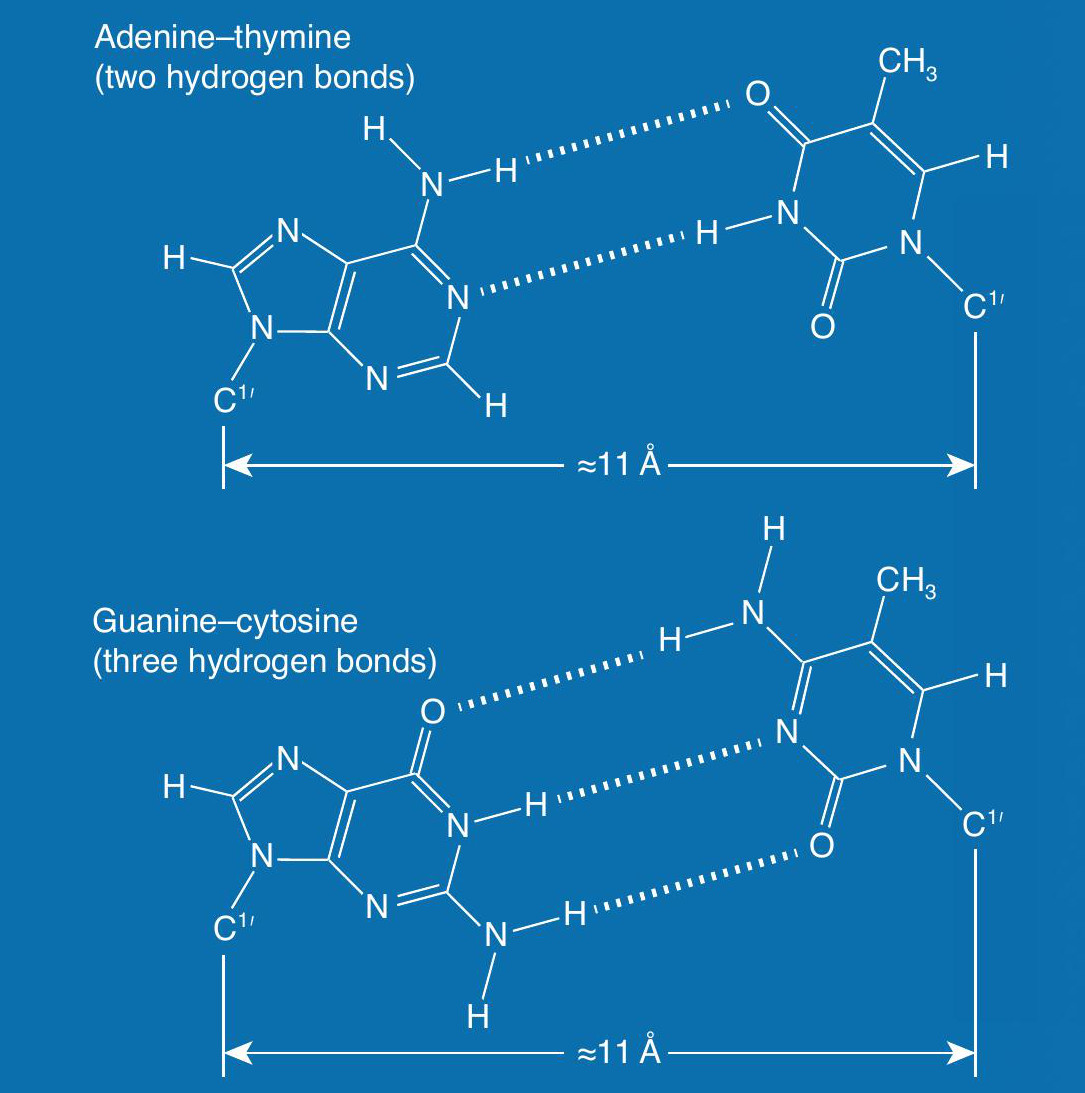
Sixty years ago this month, on 25 April 1953, a short scientific communication was published in the journal Nature. It amounted to not much more than a page, yet its impact on the scientific world was immense. This was the paper by James Watson and Francis Crick in which they proposed the now iconic double-helical structure for deoxyribonucleic acid (DNA, see CHEMISTRY REVIEW, Vol. 12, No. 4, ‘Editorial’ and pp. 12–14).
One of the key breakthroughs in elucidating this beautiful structure was working out the elegant method by which the bases (adenine, cytosine, guanine and thymine) that form the ‘rungs of the ladder’ in the double helix are able to form specific complementary pairs held together with hydrogen bonds (Figure 1). It is this base pairing that allows DNA to produce accurate copies of itself each time a cell divides.
Your organisation does not have access to this article.
Sign up today to give your students the edge they need to achieve their best grades with subject expertise
Subscribe




